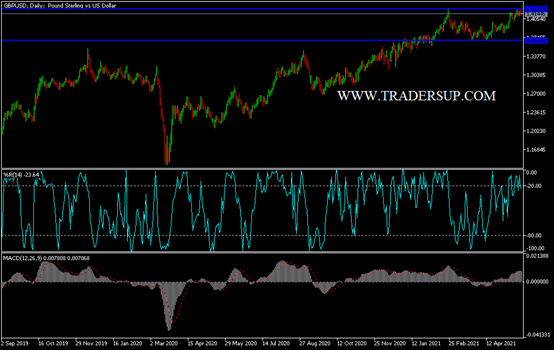Despite these concerns, the British economy continues to confirm recovery in line with the country's plans to abandon Corona restrictions. By the end of last week, UK retail sales were reported to have increased sharply in April and were, in fact, above pre-epidemic levels. This is according to new data indicating that involuntary savings that consumers had gained within months of the lockdown that was in action
According to official figures, UK retail sales rose 9.2% month over month in April according to the Office for National Statistics, which beat expectations of 4.5% and a 5.1% increase recorded in March. Retail sales rose 42.4% year-on-year in April, beating expectations at 36.8% and was a significant jump compared to the 7.2% recorded in March. The large annual number owes itself to the "base effect" given the observation that retail sales a year ago had slipped off the cliff as the UK lockdowns continued.
In the same context, the Office for National Statistics says that the increase in retail sales numbers in Britain reflects the impact of easing restrictions on the Corona virus, including the reopening of all non-essential retail stores from April 12 in England and Wales and from April 26 in Scotland. The data also supports an expectation among economists that the UK is currently experiencing a one-in-a-generation economic recovery as the country moves beyond the crippling effects of lockdown.
Commenting on the numbers, Ulas Akincilar, Head of Commerce at INFINOX says: “The main street in Britain has appeared to swing, and analysts were expecting a big April; And what they got was a huge success. ” “Sentiment is strong and a sudden spike in spending cannot be dismissed as something new. All of this is likely to bring the pound and UK markets back to the top after a choppy week. ”
The data shows that non-food stores made the largest contribution to the monthly growth in April 2021 sales volumes, supported by strong increases of 69.4% and 25.3% in clothing stores and other non-food stores respectively. The main point made by the Office for National Statistics is that sales volumes were 10.6% higher than February 2020, before the impact of the Coronavirus pandemic.
On the Coronavirus front, Britain has recorded nearly 128,000 deaths from the Coronavirus, the highest number reported in Europe. But new infections have fallen to an average of about 2,000 per day, compared to nearly 70,000 per day during the peak of winter, and deaths have dropped to single figures per day. Also, nearly 70% of British adults received their first dose of the Coronavirus vaccine, and more than 38% received the two doses together.
According to the technical analysis of the pair: I still prefer selling the sterling against the dollar. According to the performance on the daily timeframe chart, the resistance levels 1.4190, 1.4255 and 1.4330 will be the most appropriate to sell the pair in order to reap profits because these indicators will move the technical indicators to strong buying saturation levels. On the downside, the first reversal of the trend will be the stability of the currency pair below the support level of 1.4000, which separates the two directions.
In light of the absence of the economic calendar today of important economic data, whether from Britain or the United States, the new statements of the Governor of the Bank of England will affect the sentiment of forex investors towards the GBP pairs

